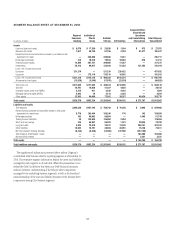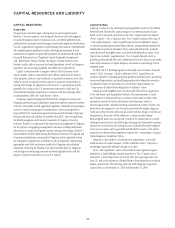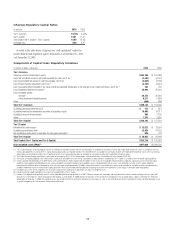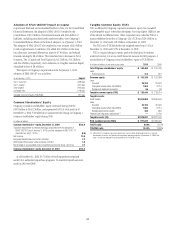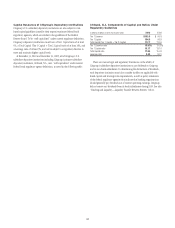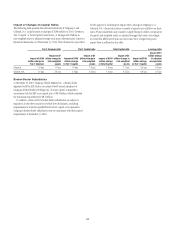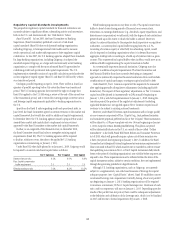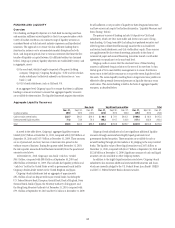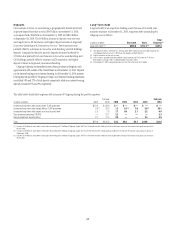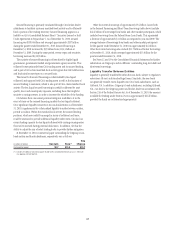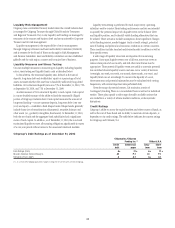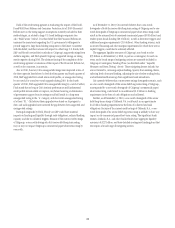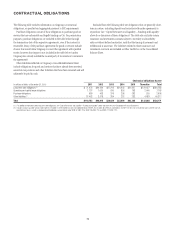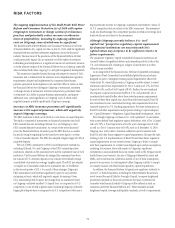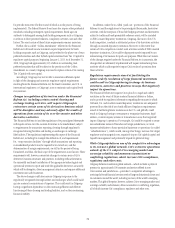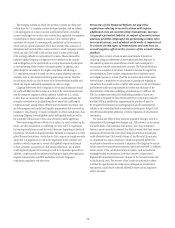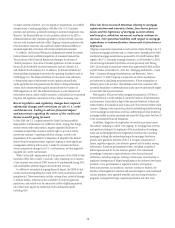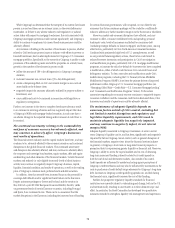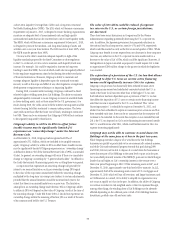Citibank 2010 Annual Report Download - page 69
Download and view the complete annual report
Please find page 69 of the 2010 Citibank annual report below. You can navigate through the pages in the report by either clicking on the pages listed below, or by using the keyword search tool below to find specific information within the annual report.
67
Secured financing is primarily conducted through Citi’s broker-dealer
subsidiaries to facilitate customer matched-book activity and to efficiently
fund a portion of the trading inventory. Secured financing appears as a
liability on Citi’s Consolidated Balance Sheet (“Securities Loaned or Sold
Under Agreements to Repurchase”). As of December 31, 2010, secured
financing was $189.6 billion and averaged approximately $207 billion
during the quarter ended December 31, 2010. Secured financing at
December 31, 2010 increased by $35 billion from $154.3 billion at
December 31, 2009. During the same period, reverse repos and securities
borrowing increased by $25 billion.
The majority of secured financing is collateralized by highly liquid
government, government-backed and government agency securities. This
collateral comes primarily from Citi’s trading assets and its secured lending,
and is part of Citi’s client matched-book activity given that Citi both borrows
and lends similar asset types on a secured basis.
The minority of secured financing is collateralized by less liquid
collateral, and supports both Citi’s trading assets as well as the business of
secured lending to customers, which is also part of Citi’s client matched-book
activity. The less liquid secured borrowing is carefully calibrated by asset
quality, tenor and counterparty exposure, including those that might be
sensitive to ratings stresses, in order to increase the reliability of the funding.
Citi believes there are several potential mitigants available to it in the
event of stress on the secured financing markets for less liquid collateral.
Citi’s significant liquidity resources in its non-bank entities as of December
31, 2010, supplemented by collateralized liquidity transfers between entities,
provide a cushion. Within the matched-book activity, the secured lending
positions, which are carefully managed in terms of collateral and tenor,
could be unwound to provide additional liquidity under stress. Citi also has
excess funding capacity for less liquid collateral with existing counterparties
that can be accessed during potential dislocation. In addition, Citi has the
ability to adjust the size of select trading books to provide further mitigation.
At December 31, 2010, commercial paper outstanding for Citigroup’s non-
bank entities and bank subsidiaries, respectively, was as follows:
In billions of dollars Non-bank Bank (1)
Total
Citigroup
Commercial paper $9.7 $15.0 $24.7
(1) Includes $15 billion of commercial paper related to VIEs consolidated effective January 1, 2010 with
the adoption of SFAS 166/167.
Other short-term borrowings of approximately $54 billion (as set forth
in the Secured Financing and Short-Term Borrowings table above) include
$42.4 billion of borrowings from banks and other market participants, which
includes borrowings from the Federal Home Loan Banks. This represented
a decrease of approximately $11 billion as compared to year-end 2009. The
average balance of borrowings from banks and other market participants
for the quarter ended December 31, 2010 was approximately $43 billion.
Other short-term borrowings also include $11.7 billion of broker borrowings
at December 31, 2010, which averaged approximately $13 billion for the
quarter ended December 31, 2010.
See Notes 12 and 19 to the Consolidated Financial Statements for further
information on Citigroup’s and its affiliates’ outstanding long-term debt and
short-term borrowings.
Liquidity Transfer Between Entities
Liquidity is generally transferable within the non-bank, subject to regulatory
restrictions (if any) and standard legal terms. Similarly, the non-bank
can generally transfer excess liquidity into Citi’s bank subsidiaries, such as
Citibank, N.A. In addition, Citigroup’s bank subsidiaries, including Citibank,
N.A., can lend to the Citigroup parent and broker-dealer in accordance with
Section 23A of the Federal Reserve Act. As of December 31, 2010, the amount
available for lending under Section 23A was approximately $26.6 billion,
provided the funds are collateralized appropriately.


